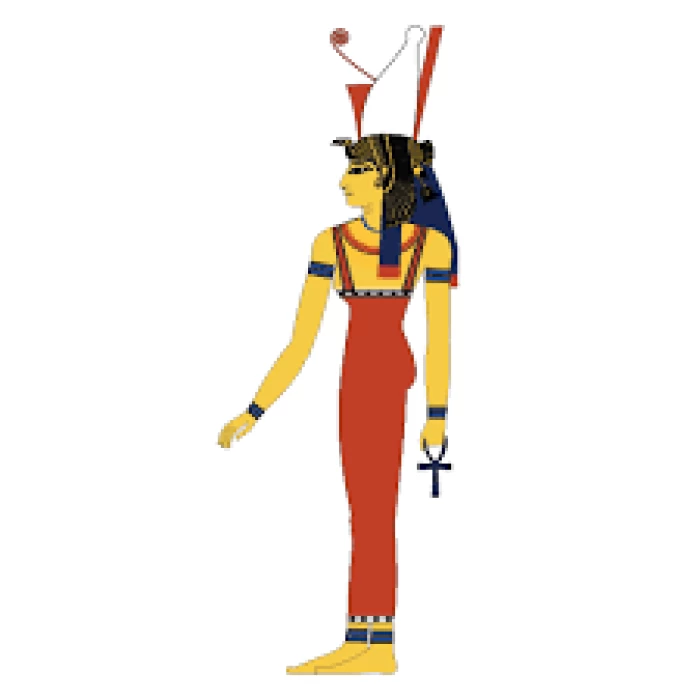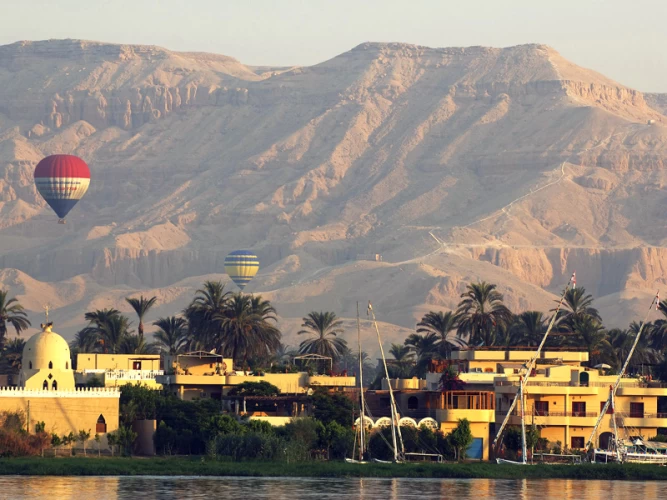
Mut and Her Symbolism in Ancient Egyptian Mythology
The ancient Egyptians worshipped the goddess Mut as a mother goddess. The literal translation of her name is Mother, according to the ancient Egyptian language. Like other goddesses, the attributes associated with Mot evolved and varied over the thousands of years of ancient Egyptian culture. This is an important aspect of Egypt Day Tours as visitors explore the rich mythology of Egypt.
People considered Mot a primordial deity and associated her with the primordial waters of the goddess Nu who gave birth to everything in the world. Mot is one of the essential goddesses from the pages of Egyptian history because she is credited with creating life itself. This fascinating story is part of many Egypt Travel Packages designed to dive deeper into Egyptian mythology.
The Origin of the Goddess Mot
People believe that Mot originated as a local goddess in the Nile River Delta. Initially, ancient texts identified Mot as the mother of the universe, which gave her the characteristics of a creator god. Later, she took on the qualities of many other goddesses and replaced some as well. Egypt Shore Excursions offer travelers the opportunity to visit the Nile Delta and explore sites related to such gods and goddesses.
Furthermore, Mot became a national goddess when the god Amun, the supreme leader of the gods and god of the wind, took the place of the patron god in Thebes. This happened during the 21st century BC, resulting in a strong increase in Mot's popularity.
Images of Mot
Images discovered by archaeologists depict Mot in the form of a woman adorned with eagle wings. Some images show her only in the form of an eagle wearing the crown of kings. Often, images of Mot depicted her wearing the double crown of Egypt or the eagle headdress of New Kingdom queens. Egypt Day Tours to Luxor can give visitors the chance to see such imagery in the temples.
Moreover, images depict Mut as a woman with the head of a lioness, cow, cobra, etc. The ancient Egyptians considered the eagle closer to a god. This may be due to the strength and ability of the eagle to fly high in the sky or its wide wingspan. It is possible that the ancient Egyptians were inspired by the eagle and distilled these maternal qualities into Mut.
The Goddess's Story with Amun and Ra
Mut also took over the position of Amun's original wife, Amunet, who was the invisible goddess. Since Amun was the god of the pharaohs, people viewed Mot as their mother, reinforcing her association with Egyptian queens. Mot was made famous by Pharaoh Hatshepsut and by Befartari Merythemut, the main wife of King Ramses II. Egypt Travel Packages often highlight the temples of Amun and Mut in Thebes as a must-visit.
Amun's authority diminished as time progressed, and history merged him with the sun god Ra as the god Amun-Ra. It also led to Mut's fusion with Hathor, mother of Horus and wife of Ra. Hence, Mot inherited the title “Eye of Ra” which linked the mythology with Sekhmet, Hathor, Tefnut, Bast and Wadjet.
People considered “Eye of Ra” to be the daughter of the sun god Ra who took the form of a lion. The body of the great animal had the ferocity and heat of the sun itself. But since people worshipped Mot as “the mother of the sun in the rising,” she became the mother and daughter of Ra.
The Family Ties of the Goddess Mot
According to ancient texts, Mot had no parents because the legends say she was the Great Mother. However, despite being a mother goddess, she did not give birth to her own children. Instead, she adopted the war and moon gods, Minto and Khonsu, respectively. The ancient Egyptians in Luxor built the Temple of Amun where they worshipped the Trinity of Thebes. This triad consisted of Amun, his consort Mut, and their son Khonsu during the 18th and 25th Dynasties.
Associations of goddesses
Ancient texts closely associate Mut with several other prominent deities. They include Isis and Nut, making her part of various composite pantheons. Together with Isis and Nekhbet, the goddess Mut formed the deity called “Mut Isis Nekhbet, the Great Mother and Lady.” Egypt Shore Excursions often feature the temples where these associations were celebrated.
Historians have discovered images that depict the goddess as a winged goddess with a leonine foot, an erect phallus, and three heads. The three heads were: A lioness bust with a double-braided headdress by Min, an eagle with the red crown of Lower Egypt, and a woman adorned with the double crown of Egypt.
Other images include Mut in a trio with Bast and Sekhmet as the god of Sekhmet-Bast-Ra. This cult statue also had three heads: A lion with a braided headdress, a woman with a double crown and an eagle with a double feathered hat. Egypt Day Tours often bring visitors to these significant sites of worship.
Latest Articles
Admin
Aswan Governerate in Egypt
Aswan was known as ‘Sonu’ in ancient Egyptian times, meaning market, as it was a trading centre for caravans coming to and from Nubia. In the Ptolemaic era, it was called ‘Sin’ and the Nubians called it ‘Yaba Swan’. It was also known as the Land of Gold because it served as a great treasure or tomb for the kings of Nubia who lived there for thousands of years. Before the migration, Aswan's borders extended from Asna in the east to the border of Sudan in the south, and its inhabitants were Nubians, but after the Islamic conquest of Nubia, some Arab tribes settled there.
Admin
About Luxor Governorate in Egypt
The South Upper Egyptian area is home to the Egyptian governorate of Luxor. Its capital is Luxor, which was formerly Thebes, the capital of Egypt throughout multiple pharaonic eras. Its centers and cities are spread over both sides of the Nile River. The said governorate was established by Presidential Decree No. 378 of 2009, which was promulgated on the 9th of December of that year.
Admin
History of kafr El Sheikh Governorate
Kafr El Sheikh Governorate, located in the far north of Egypt in the Nile Delta, overlooking the Mediterranean Sea, is characterised by the diversity of natural life and environments, and is one of the Egyptian cities that can be visited after the end of the first semester exams at universities and schools, as it features many diverse tourist and recreational places at symbolic prices within everyone's reach.
Admin
Egypt's New Administrative Capital
The New Administrative Capital is considered the project of the era because it reflects a perfect image of the future and progress on the economic, cultural, social and civilisational level, as the capital is considered the new capital of Egypt at the present time. The importance of the New Capital is that it is a comprehensive transformation of the future of buildings, services and national and mega projects in Egypt.
Admin
Al Gharbia Governorate
The Governorate of Gharbia is inclusive in the geographical area of The Arab Republic of Egypt which is in the African continent, more specifically in the region surrounding the Nile delta, between Damietta and Rashid governance. To the control of the region from the north is Kafr El-Sheikh Governorate, from the south Menoufia Governorate, from the east – Dakahlia, Qalyubia Governorates, and to the west is the Beheira Governorate.
Admin
Hamata Islands (Qulaan Archipelago) in Marsa Alam
Each reserve has several sectors. In Wadi El Gemal Reserve, there is one of the natural areas called the Hamata area or Hamata sector in Wadi El Gemal Reserve. Its sectors are the perfect and most ecological, land and water, and host countless animals and plants found in the oceans and on the land.















